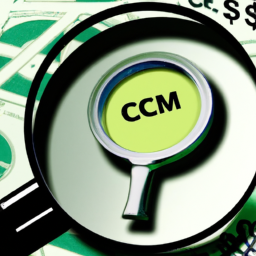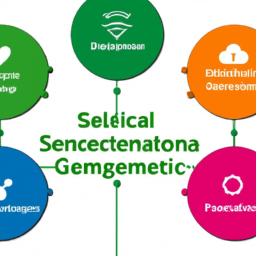Are you ready to master the Six Sigma Green Belt Exam? Get ready to dive into the essential topics that will propel you towards success.
In this article, we’ll guide you through the Define and Measure Phase, teach you the intricacies of Statistical Tools and Techniques, and help you grasp the principles of Lean Practices.
With our expert guidance, you’ll gain a deep understanding of Project Management, Quality Control, and much more.
So, let’s embark on this knowledge-packed journey together!
Key Takeaways
- Define and Measure Phase: Collect data, identify key metrics, define problem statement and project goals, understand scope, establish framework for improvements.
- Process Capability and Performance: Measure and analyze data, use standardized metrics for process performance, employ process improvement techniques, utilize statistical tools.
- Six Sigma Metrics: Measure defects per million opportunities, assess process capability with Cpk, determine probability of defect-free output with RTY, measure cycle time.
- Process Improvement Techniques: Implement continuous improvement methods, use value stream mapping, conduct root cause analysis, redesign and automate processes to enhance performance.
Define and Measure Phase
In the Define and Measure Phase, you’ll learn how to collect data and identify the key metrics for your project. This phase is crucial in the Six Sigma methodology as it sets the foundation for the rest of the project.
During the define phase, you will clearly define the problem statement, project goals, and objectives. This step helps you understand the scope of the project and ensures everyone involved is on the same page.
Moving on to the measure phase, you will focus on data collection and analysis. This includes identifying the relevant data sources, determining what data needs to be collected, and establishing measurement systems.
Through these two phases, you will establish a solid framework for your project and gather the necessary information to drive improvements.
Process Capability and Performance
In this subtopic, you’ll delve into the important concepts of Measurement and Analysis, Six Sigma Metrics, and Process Improvement Techniques.
Measurement and Analysis focuses on the tools and techniques used to collect data and analyze it for process improvement purposes.
Six Sigma Metrics provide a standardized way to measure process performance and identify areas for improvement.
Lastly, Process Improvement Techniques include various strategies and methods that can be implemented to enhance process efficiency and effectiveness.
These three key points are essential for understanding how to measure, analyze, and improve processes in a Six Sigma context.
Measurement and Analysis
One important aspect of the Measurement and Analysis topic in the six sigma green belt exam is understanding how to use statistical tools. In this section, you will learn how to effectively measure and analyze data using various statistical techniques.
Data measurement involves collecting accurate and reliable data to make informed decisions. You will learn about different measurement scales, data collection methods, and the importance of data accuracy and precision.
Statistical analysis, on the other hand, focuses on analyzing the collected data to gain meaningful insights and make data-driven decisions. You will learn about various statistical tools such as histograms, scatter plots, control charts, and hypothesis testing. These tools will help you identify trends, patterns, and relationships in the data.
Mastering these statistical tools will enable you to make informed decisions and improve processes in your organization.
Now, let’s delve into the next section about ‘six sigma metrics.’
Six Sigma Metrics
To understand the concepts of Six Sigma Metrics, you’ll need to familiarize yourself with the key performance indicators used to measure process performance. Here are four essential Six Sigma metrics that can help you analyze and improve your processes:
-
Defects per Million Opportunities (DPMO): This metric measures the number of defects in a process per one million opportunities. It helps identify areas for improvement and set performance goals.
-
Process Capability Index (Cpk): Cpk measures the capability of a process to produce within specification limits. It assesses the level of process performance and helps identify if the process is capable of meeting customer requirements.
-
Rolled Throughput Yield (RTY): RTY measures the probability of a process producing defect-free output through multiple stages. It helps identify areas of waste and inefficiency in the process.
-
Cycle Time: Cycle Time measures the time it takes to complete a process or task. It helps identify bottlenecks and inefficiencies and can be used to set targets for process improvement.
Process Improvement Techniques
By utilizing various process improvement techniques, you can effectively enhance the performance of your processes. Process improvement strategies are essential for organizations seeking to optimize their operations and achieve higher levels of efficiency.
Continuous improvement methods like Lean Six Sigma provide a structured approach to identifying and eliminating waste, reducing defects, and improving overall process performance. One popular technique is value stream mapping, which enables you to visualize the flow of materials and information through your processes and identify areas for improvement.
Another technique is root cause analysis, which helps identify the underlying causes of process issues and develop targeted solutions. Additionally, process redesign and automation can streamline workflows and eliminate bottlenecks.
Data Collection and Analysis
Start by familiarizing yourself with the techniques of data collection and analysis. It is crucial to ensure data integrity, as accurate and reliable data is essential for effective decision-making. Here are four key techniques to master:
-
Define your data collection plan: Clearly outline what data needs to be collected, how it will be collected, and who will be responsible for collecting it. This ensures consistency and eliminates biases.
-
Choose appropriate data analysis tools: Understanding statistical methods like regression analysis, hypothesis testing, and control charts will enable you to analyze the data effectively and draw meaningful conclusions.
-
Conduct root cause analysis: Dig deep into the data to identify the underlying causes of problems or issues. This helps in developing targeted solutions and preventing recurrence.
-
Practice data visualization: Presenting data visually through charts, graphs, and diagrams helps to communicate complex information clearly and aids in identifying patterns and trends.
Statistical Tools and Techniques
Understanding statistical methods is crucial for effectively analyzing data and drawing meaningful conclusions. Whether you’re working on a project or conducting research, statistical tools and techniques play a vital role in decision-making. Two important concepts in statistical analysis are statistical modeling and hypothesis testing. Statistical modeling involves using mathematical formulas to represent and analyze real-world phenomena. It helps us make predictions and understand the relationships between variables. Hypothesis testing, on the other hand, allows us to assess the validity of a claim or hypothesis based on sample data. By comparing the observed data with what we would expect to observe if the null hypothesis were true, we can determine whether there is enough evidence to support or reject the claim. A clear understanding of statistical modeling and hypothesis testing is essential for accurate data analysis and making informed decisions.
| Statistical Modeling | Hypothesis Testing |
|---|---|
| Mathematical formulas are used to represent and analyze real-world phenomena | Assess the validity of a claim or hypothesis |
| Helps make predictions and understand relationships between variables | Determine if there is enough evidence to support or reject the claim |
Lean Principles and Practices
Lean principles and practices emphasize the importance of continuous improvement and waste reduction to optimize efficiency and maximize value for the customer. By implementing lean principles, organizations can streamline processes and eliminate non-value adding activities.
Here are four key elements of lean implementation:
-
Value Stream Mapping: This tool helps identify the flow of materials and information throughout the entire process, highlighting areas of waste and inefficiency.
-
5S: This method focuses on organizing and standardizing the workplace, improving safety, productivity, and morale.
-
Kaizen Events: These short-term projects bring together cross-functional teams to solve specific problems and make immediate improvements.
-
Just-in-Time (JIT): This approach aims to produce and deliver products or services exactly when they are needed, reducing inventory and waste.
Design and Optimization of Experiments
Now that you have a good understanding of Lean Principles and Practices, let’s dive into the next subtopic: Design and Optimization of Experiments. This topic focuses on the process of experimental design and how to optimize the response of a system.
Experimental design involves carefully planning and conducting experiments to gather data and analyze the effects of various factors on a response variable. By manipulating these factors and measuring the response, we can gain insights into how to improve the system or process.
Once the data is collected, response optimization techniques can be applied to find the optimal settings for the factors that will result in the desired outcome. This allows us to maximize the efficiency, effectiveness, and overall performance of the system.
To further illustrate this concept, here is a table that showcases the impact of different experimental designs on system performance:
| Experimental Design | System Performance |
|---|---|
| Full Factorial Design | High |
| Fractional Factorial Design | Moderate |
| Taguchi Design | Low |
| Response Surface Design | Very High |
| Central Composite Design | High |
As you can see, the choice of experimental design can have a significant impact on the system performance. By carefully selecting the right design and optimizing the response, you can make informed decisions to improve your processes and achieve your desired outcomes.
Control Phase and SPC
In the Control Phase, you will learn about Statistical Process Control (SPC), which is a methodology used to monitor and control processes to ensure they are within acceptable limits. SPC utilizes Control Charts and Analysis to track process performance over time and detect any deviations or trends that may indicate a process is out of control.
Statistical Process Control
To understand Statistical Process Control, you should familiarize yourself with control charts and their significance in monitoring process performance. Control charts are graphical tools that help analyze process data and identify any variations or trends.
Here are four key points to help you grasp the concept of statistical process control:
-
Control charts provide a visual representation of process performance over time, allowing you to identify common cause and special cause variations.
-
By plotting data points on a control chart, you can determine if the process is within acceptable limits or if it requires adjustment.
-
Analysis of control charts helps you distinguish between random variation and assignable causes, enabling you to take appropriate corrective actions.
-
Control charts provide real-time feedback on process performance, allowing you to make informed decisions and improve overall quality.
Control Charts and Analysis
Control charts provide a visual representation of your process performance over time, allowing you to identify common cause and special cause variations. These charts are a valuable tool in statistical process control, helping you monitor your process and make data-driven decisions.
By plotting your process data on control charts, you can determine if your process is in control or out of control. Control limits are used to establish the boundaries of expected variation, and any data points falling outside these limits indicate special cause variation. This alerts you to potential issues or opportunities for improvement that require further investigation.
Root cause analysis is then conducted to identify the underlying causes of special cause variation and implement appropriate corrective actions. Control charts, along with control limits and root cause analysis, are essential tools for ensuring process stability and improvement.
Variation Reduction Techniques
Variation reduction techniques can be implemented to minimize the amount of variation in a process. By reducing variation, organizations can improve quality, increase efficiency, and reduce costs.
Here are four effective variation reduction methods that can be used:
-
Standardization: Standardizing processes and procedures helps eliminate unnecessary variations caused by inconsistent practices.
-
Root Cause Analysis: Identifying and addressing the root causes of variation can lead to long-term solutions and prevent recurrence.
-
Process Capability Analysis: Analyzing process capability helps identify areas of improvement and determine if a process is capable of meeting customer requirements.
-
Statistical Process Control (SPC): SPC involves the use of control charts and statistical analysis to monitor and control process variation in real-time.
Process variability analysis is a crucial step in implementing variation reduction techniques. It involves analyzing data to understand the sources of variation and develop strategies to minimize them. By applying these methods and conducting thorough process variability analysis, organizations can achieve more consistent and predictable processes, resulting in improved outcomes.
Project Management and Leadership
Effective project management and strong leadership are crucial for successful implementation of Six Sigma methodologies.
As a Six Sigma Green Belt, you will be responsible for leading and managing projects aimed at improving processes and reducing defects.
Project management involves planning, organizing, and controlling all aspects of a project to ensure its successful completion. This includes defining project goals, creating a timeline, allocating resources, and monitoring progress.
Leadership plays a vital role in motivating and guiding team members, as well as effectively communicating the project’s objectives and requirements. A strong leader is able to inspire and empower team members, fostering a collaborative and productive work environment.
DMAIC Methodology
Now that you understand the importance of project management and leadership in the Six Sigma Green Belt exam, let’s dive into the DMAIC methodology, which is a key component of process improvement techniques.
The DMAIC methodology stands for Define, Measure, Analyze, Improve, and Control. It provides a structured approach to problem-solving and process improvement, helping organizations identify and eliminate defects, reduce variation, and improve overall efficiency.
Here are four key aspects of the DMAIC methodology:
-
Define: Clearly define the problem, project goals, and customer requirements.
-
Measure: Collect and analyze data to understand the current state of the process.
-
Analyze: Identify the root causes of the problem and determine opportunities for improvement.
-
Improve: Develop and implement solutions to address the root causes and achieve the desired outcomes.
Quality Control and Assurance
To ensure quality control and assurance, you need to actively monitor and evaluate the processes in your organization. Quality management is crucial for the success of any business, as it helps in preventing defects and ensuring customer satisfaction.
By implementing effective quality control measures, you can identify and eliminate any potential issues before they become major problems. This involves setting quality standards, conducting regular inspections, and using data-driven analysis to identify areas for improvement.
By actively monitoring and evaluating your processes, you can identify any deviations from the desired standards and take corrective actions to prevent defects from occurring. This proactive approach not only helps in maintaining product quality but also enhances customer trust and loyalty.
Therefore, investing in quality control and assurance is essential for the long-term success of your organization.
Frequently Asked Questions
What Are the Key Responsibilities of a Six Sigma Green Belt During the Define and Measure Phase?
During the define and measure phase, your key responsibilities as a Six Sigma Green Belt include identifying and defining customer requirements, mapping out the current process, and collecting data for analysis. By doing so, you ensure that the project is aligned with the organization’s goals and objectives.
This phase helps you understand the current state of the process and identify areas for improvement. By effectively carrying out these responsibilities, you contribute to the overall benefits of Six Sigma, such as reducing defects, improving quality, and increasing customer satisfaction.
Can You Provide Examples of Process Capability and Performance Metrics Used in Six Sigma Projects?
Process capability and performance metrics are vital in six sigma projects. Examples of process capability metrics include Cp, which measures the ability of a process to produce within specification limits, and Cpk, which considers both the centering and spread of the data.
Performance metrics, on the other hand, assess the effectiveness of a process. These may include defects per million opportunities (DPMO), yield, or customer satisfaction scores.
Understanding and utilizing these metrics are crucial for ensuring process improvement and achieving desired outcomes.
How Can Data Collection and Analysis Techniques Help in Identifying Root Causes of Process Variations?
Data analysis techniques are a valuable tool when it comes to identifying the root causes of process variations. By collecting and analyzing data, you can uncover patterns and trends that may be contributing to variations in your processes. This allows you to pinpoint the specific factors that are causing the variations and take corrective action to address them.
Data analysis techniques such as statistical analysis and process mapping can provide valuable insights into the underlying causes of process variations.
What Are Some Commonly Used Statistical Tools and Techniques in Six Sigma Projects?
To succeed in your Six Sigma Green Belt Exam, you need to be familiar with commonly used statistical tools and techniques in Six Sigma projects. Two important ones are hypothesis testing and control charts.
Hypothesis testing helps you analyze data to determine if there is a significant difference between two groups.
Control charts, on the other hand, help you monitor and control process performance over time.
Understanding these tools and techniques will be crucial in your journey towards becoming a Six Sigma Green Belt.
How Does the Implementation of Lean Principles and Practices Contribute to Process Improvement in Six Sigma Projects?
Implementing lean principles and practices in Six Sigma projects has several benefits.
Lean focuses on eliminating waste and improving efficiency, which complements the goal of process improvement in Six Sigma.
By integrating Lean Six Sigma, you can streamline processes, reduce cycle times, and enhance overall productivity.
Lean principles such as value stream mapping and continuous improvement provide a structured approach to identify and eliminate non-value-added activities, resulting in better quality and customer satisfaction.
Conclusion
Congratulations! You’ve reached the end of this article. Now, you possess a comprehensive understanding of the ten essential topics covered in the Six Sigma Green Belt exam.
Like a well-crafted puzzle, these topics fit together perfectly. They provide you with the knowledge and skills necessary to excel in the world of quality improvement.
So, go forth and conquer the exam with confidence, just like a skilled musician playing a harmonious melody.

















